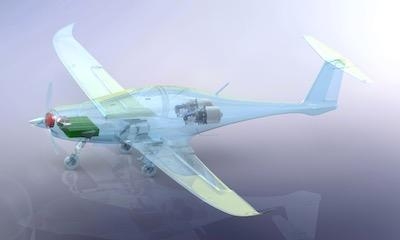Tue, Jul 26, 2022
Electric Flight Orchestra…
NASA’s Electrified Powertrain Flight Demonstration (EPFD) program seeks to hasten humankind’s transition from conventional, fossil-fuel-burning aircraft to ostensibly greener machines powered by Electrified Aircraft Propulsion (EAP) technologies. In collaboration with private industry partners, the space agency conducts ground and flight-tests of extant aircraft retrofitted with electric propulsion systems.

NASA posits that only by assessing and addressing the technical barriers and risks inherent fitting electric powertrains to existing airliners can standards be developed for future EAP aircraft. In addition to its regulatory aims, the EPFD program sets out to provide NASA’s aerospace industry partners data and experience by which to produce lighter, more powerful and efficient motors; improved pilot-interfaces with subject motors; and batteries and electronics conducive to maximizing aircraft safety and range.
NASA aspires to conduct at least two flight demonstrations of aircraft kitted out with electric powertrains developed under the auspices of its EPFD program within the next five-years. Longer-term, the space agency means to see such powertrains in broad use across America’s commercial airline fleet by 2035.
To meet its ambitious objectives, NASA has chosen a pair of U.S. companies—G.E. Aviation and MagniX—to develop electric propulsion technologies. To better motivate them, the two companies were awarded federal grants totaling $253-million—$179-million to G.E. and $74-million to MagniX.
The EPFD program is part of a larger NASA undertaking called Integrated Aviation Systems, which develops means by which to turn inchoate technologies into real-world, operational flight systems.

Across the globe, myriad companies are about the business of developing electric aircraft propulsion systems for light aircraft and the eVTOL vehicles saliant to emergent air-taxi markets. The diminutive size of such aircraft mitigates the weight—and therefore the output and endurance—of the batteries by which they’re powered. The regional and narrow-body aircraft upon which NASA’s EPFD program is predicated—by dint of their greater size and superior lift-production—allow for the carriage of heavy, powerful, long-lasting batteries that allow researchers to circumvent the fundamental, weight/power/endurance paradox by which the development of electric aircraft powertrains has been chronically hampered.
More News
Pilot Also Reported That Due To A Fuel Leak, The Auxiliary Fuel Tanks Were Not Used On June 4, 2025, at 13:41 eastern daylight time, a Piper PA-23, N2109P, was substantially damage>[...]
Have A Story That NEEDS To Be Featured On Aero-News? Here’s How To Submit A Story To Our Team Some of the greatest new stories ANN has ever covered have been submitted by our>[...]
From 2023 (YouTube Edition): Reflections on War’s Collective Lessons and Cyclical Nature The exigencies of war ought be colorblind. Inane social-constructs the likes of racis>[...]
Aero Linx: Colorado Pilots Association (CPA) Colorado Pilots Association was incorporated as a Colorado Nonprofit Corporation in 1972. It is a statewide organization with over 700 >[...]
High Speed Taxiway A long radius taxiway designed and provided with lighting or marking to define the path of aircraft, traveling at high speed (up to 60 knots), from the runway ce>[...]
 NTSB Prelim: Piper PA-23
NTSB Prelim: Piper PA-23 ANN FAQ: Submit a News Story!
ANN FAQ: Submit a News Story! Classic Aero-TV: One Mans Vietnam
Classic Aero-TV: One Mans Vietnam ANN's Daily Aero-Linx (07.03.25)
ANN's Daily Aero-Linx (07.03.25) ANN's Daily Aero-Term (07.03.25): High Speed Taxiway
ANN's Daily Aero-Term (07.03.25): High Speed Taxiway




